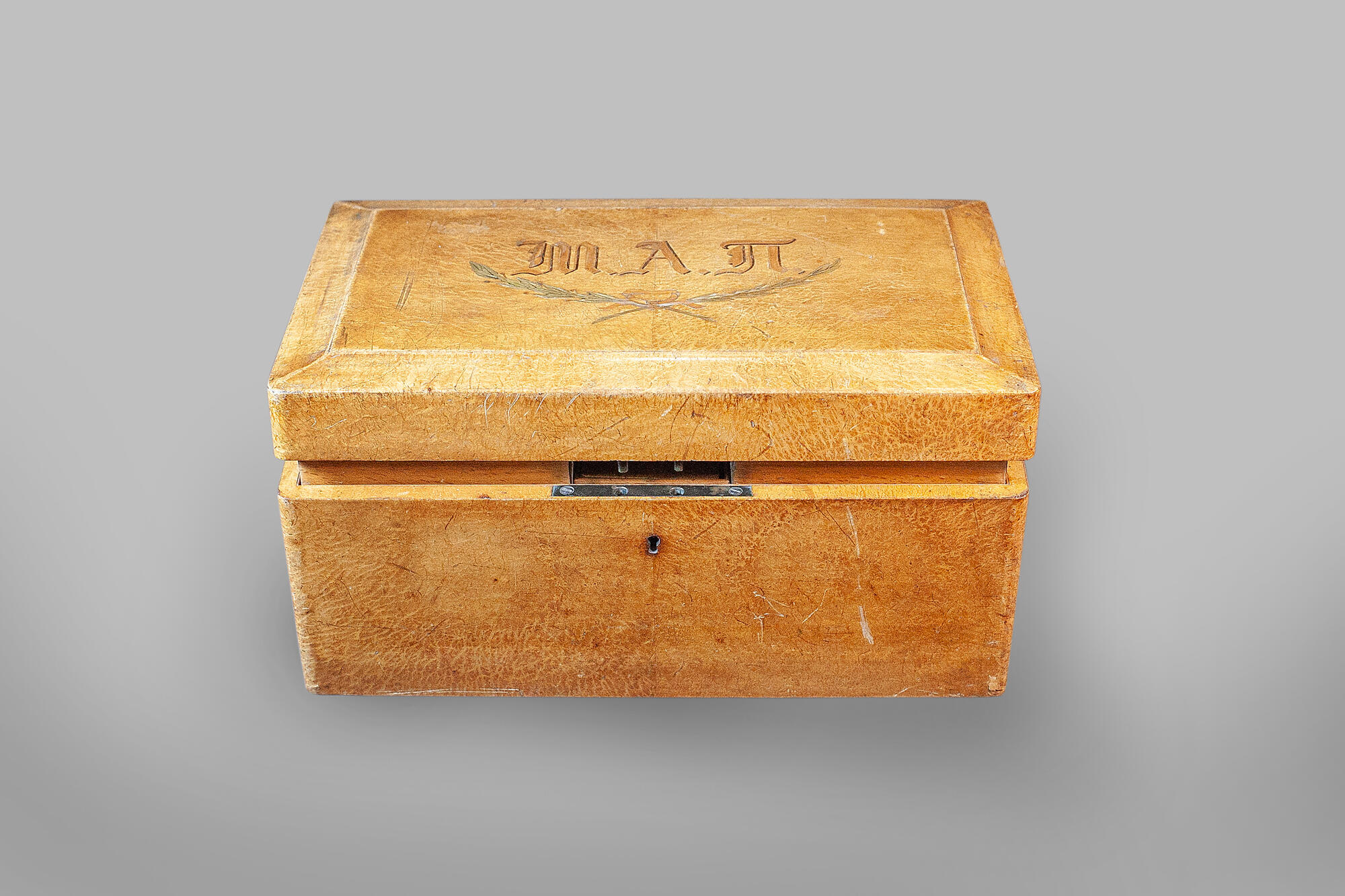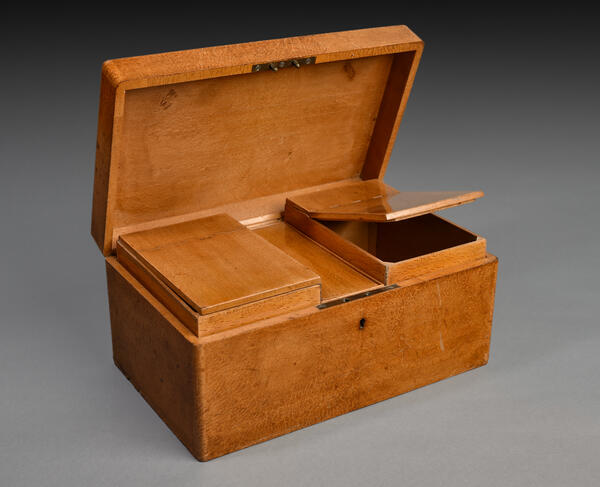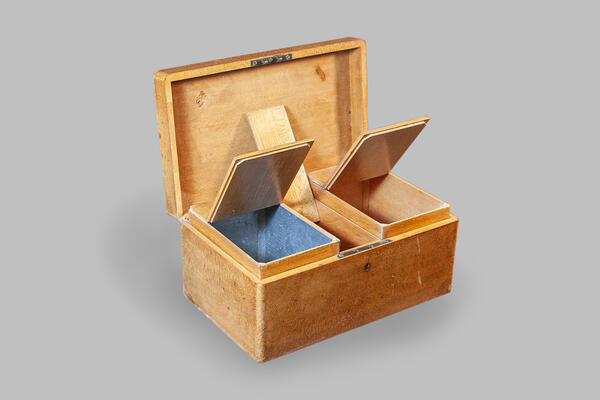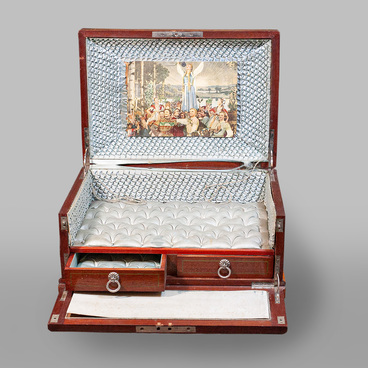The section “Railway and River Transport in Vyatka” of the exhibition “Characters and Events of Vyatka History” features a traveling casket for tea and sugar, inlaid with burr. Such a box could still be used today. It preserves the memory of the Bronnikov dynasty of talented burr craftsmen from Vyatka.
Burr, a surprisingly durable golden-colored material, has been known in Russia for a long time. It grows on tree trunks, branches, and roots. Burr yields beautiful and highly figured wood. It was in Vyatka in the 19th century that the unique burr craft flourished and gained worldwide fame.
By the end of the 19th century, burr production occupied a significant place in the handicraft industry of the Vyatka Governorate. Its center was the town of Vyatka. Local craftsmen were famous not only for the quantity but mostly for the exquisite quality of their products. This is evidenced by their well-deserved success at the All-Russian Exhibitions in Nizhny Novgorod.
But the material gradually became less common, which is why instead of continuing to make large items of burr, craftsmen cut it into thin sheets, carefully preserving the unique pattern, and used it to inlay large products. The remains were used for smaller items, such as powder boxes, seal cases, and cufflinks. Over time, ink blotters, wedding and card boxes, coin boxes, tea caddies, chess, albums, writing instruments, and glove boxes also began to be made of burr. At the turn of the 20th century, burr boxes were a necessary item for a citizen where valuable possessions could be kept.
It was very convenient to take such boxes on trips, including by rail, which connected the Great Siberian Route with the Russian capital — St. Petersburg. Vyatka was located on the Trans-Siberian Railway, which significantly increased its status. In the business circles of Vyatka, this caused great elation. Although passenger trains were slow, it was possible to get from Vyatka to St. Petersburg quite quickly, in contrast to a two-week trip by post chaise.
Burr, a surprisingly durable golden-colored material, has been known in Russia for a long time. It grows on tree trunks, branches, and roots. Burr yields beautiful and highly figured wood. It was in Vyatka in the 19th century that the unique burr craft flourished and gained worldwide fame.
By the end of the 19th century, burr production occupied a significant place in the handicraft industry of the Vyatka Governorate. Its center was the town of Vyatka. Local craftsmen were famous not only for the quantity but mostly for the exquisite quality of their products. This is evidenced by their well-deserved success at the All-Russian Exhibitions in Nizhny Novgorod.
But the material gradually became less common, which is why instead of continuing to make large items of burr, craftsmen cut it into thin sheets, carefully preserving the unique pattern, and used it to inlay large products. The remains were used for smaller items, such as powder boxes, seal cases, and cufflinks. Over time, ink blotters, wedding and card boxes, coin boxes, tea caddies, chess, albums, writing instruments, and glove boxes also began to be made of burr. At the turn of the 20th century, burr boxes were a necessary item for a citizen where valuable possessions could be kept.
It was very convenient to take such boxes on trips, including by rail, which connected the Great Siberian Route with the Russian capital — St. Petersburg. Vyatka was located on the Trans-Siberian Railway, which significantly increased its status. In the business circles of Vyatka, this caused great elation. Although passenger trains were slow, it was possible to get from Vyatka to St. Petersburg quite quickly, in contrast to a two-week trip by post chaise.









